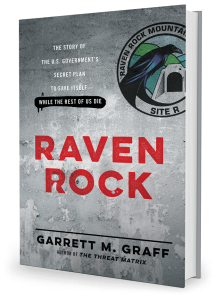Below is the text of my monthly “Editor’s Letter” in the new issue of Washingtonian.
—-
There’s no constitutional reason for any of the pomp and circumstance around the inauguration. The presidential oath of office has been administered in very humble settings—one of my home state’s two Presidents, Calvin Coolidge, received the oath from his father, a notary public, in the family’s remote Vermont cabin after the death of Warren Harding. President Obama will this time be sworn in privately by Chief Justice John Roberts the day before the public ceremony.
Yet the symbolism of the inauguration matters deeply. The peaceful, democratic transition of freely elected governments demonstrates our republican ideals more than any other moment.
When George Washington raised his hand to take the presidential oath for the first time, he understood that the act symbolically created an America where there had been none before. For the occasion, he wore a double-breasted brown suit woven at the Woolen Manufactory in Hartford, Connecticut. It was an American suit at a time when there was little that said America. “I hope it will not be a great while before it will be unfashionable to appear in any other dress,” he told the Marquis de Lafayette.
Washington and his fellow founders improvised almost every aspect of that first inauguration on April 30, 1789, in the temporary capital of New York City. There were no Supreme Court justices yet, so New York’s highest-ranking judge, Robert Livingston, swore Washington in. They borrowed a Bible from a Masonic hall and opened it randomly to Genesis 49:13, where Washington placed his hand above the words “Zebulun shall dwell at the haven of the sea; and he shall be for an haven of ships; and his border shall be unto Zidon.”
A huge throng on the street watched Washington and Livingston on the second-floor balcony of Federal Hall. With the oath completed, Livingston shouted, “Long live George Washington, President of the United States!” and the crowd responded in kind. After decades of “Long live the king,” neither knew what the appropriate cheer for a republic would be. Almost every aspect of the nascent government and presidency was uncharted territory. Not all of the suggestions were good ones: Washington rejected the Senate’s idea to refer to him formally as His Highness, the President of the United States, and Protector of Our Liberties. Instead, a simpler suggestion from the House was chosen: President of the United States.
This month, we mark yet another inauguration, and while the pageantry and scale would surprise George Washington, the sentiments in the streets of the capital would not. There’s no party like an inauguration, when the whole city celebrates the transition from one government to the next. While it’s unlikely that the second Obama inaugural will create a Nobel Prize–worthy moment like that of 2009, this year’s ritual once again marks an opportunity for a fresh start. With a new term and a new Congress come a new chapter for the nation and a new crop of civil servants.
The January Washingtonian celebrates this time of renewal for our country and our region. Washington and the United States have thrived over the past 225 years because people constantly arrive in the capital with new ideas. This city, after all, was nothing before Pierre L’Enfant imagined it. Today a new generation of L’Enfants is working to put its own stamp on the region. Our picks for the area’s “new guard”—in an article beginning on page 94—span the fields of science, politics, arts, food, religion, sports, and education.
Washington is better for all of these people, from a sheriff in Loudoun County and a new oyster company on the Chesapeake Bay in Virginia to medical advances in Maryland and architecturally striking DC libraries that would make L’Enfant proud. And then there’s our new quarterback.
Of course, while many aspects of today’s Washington would be unrecognizable to those who witnessed the first President’s swearing-in, more than the oath has stayed constant: We’re still fascinated by inaugural fashions, so on page 88 you’ll find a retrospective of First Lady gowns.
Amid all the tradition, however, more change looms, as seen in our memo to Hillary Clinton on page 76. After all, one of the biggest questions in today’s Washington is whether four years from now we’ll be wondering what the First Husband will be wearing to his wife’s inauguration.



Recent Comments